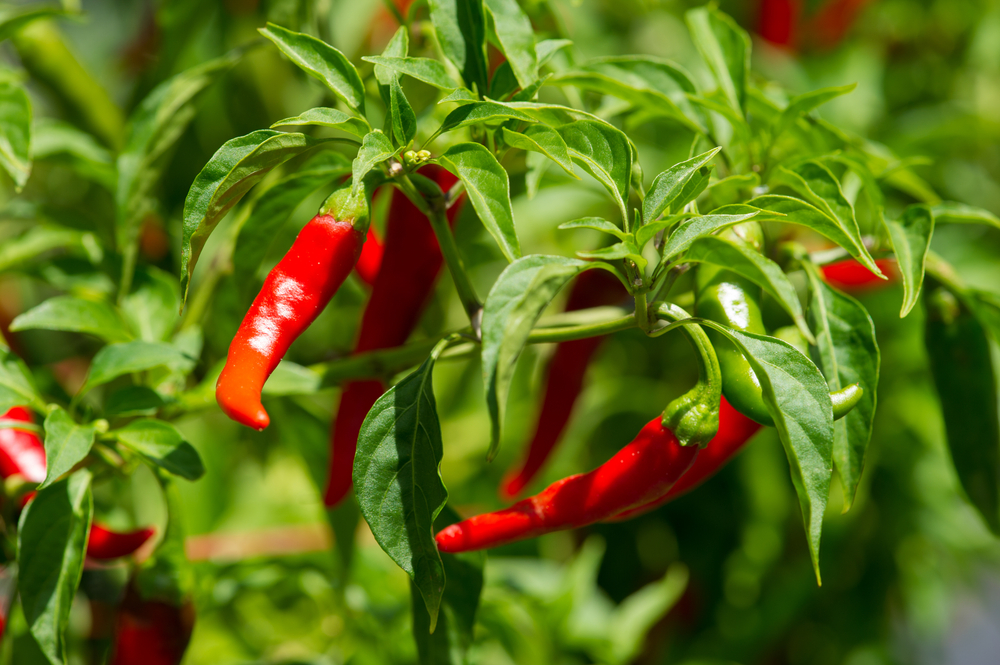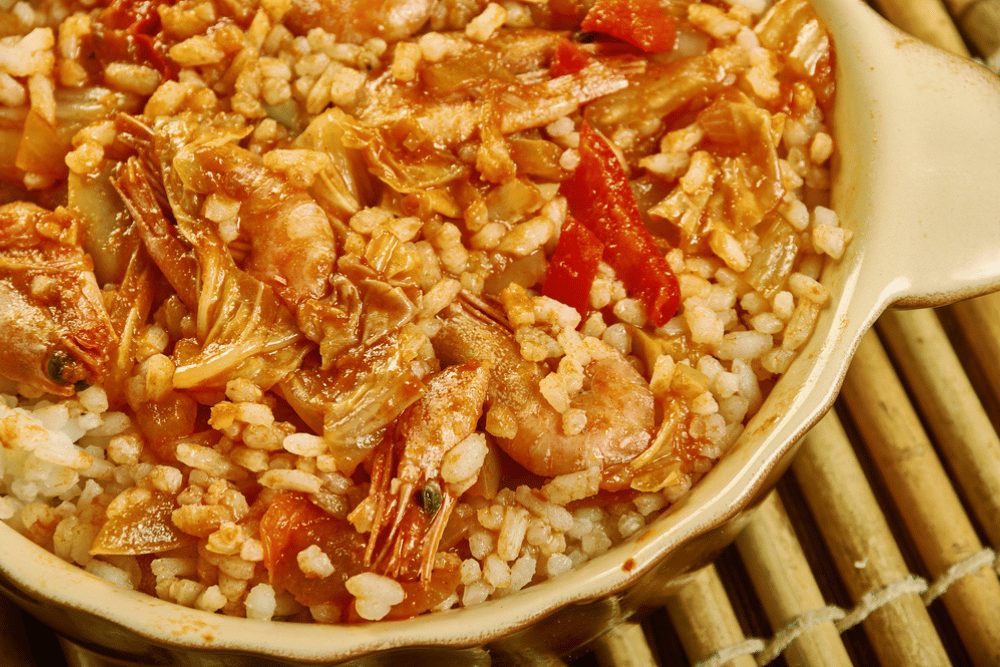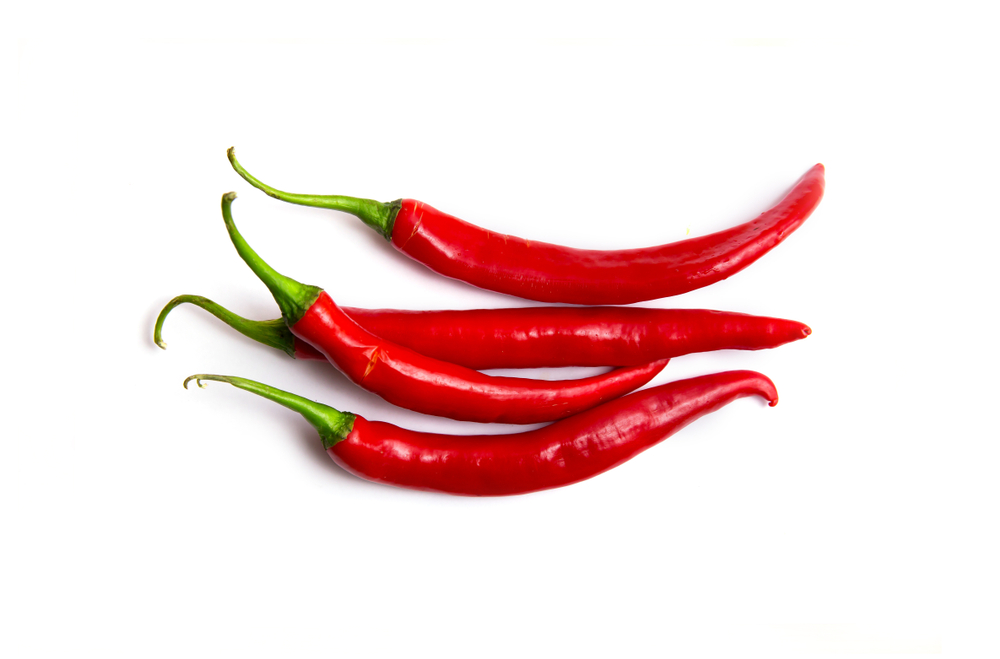Charleston hot peppers are a hybrid pepper that takes after the typical cayenne chiles, except they’re bred to be hotter and resistant to root-knot nematode. This spiciness and peppery flavors make it excellent for hot sauces, stews, soups, salsas, and marinades.
What Are Charleston Peppers?
Charleston peppers are hybrid peppers created in 1993 by plant pathologist David Dukes and geneticist Richard Fery.
While working for the U.S. Department of Agriculture at Clemson University, David and Richard sought to make a hybrid chile that could withstand a parasitic root infection known as a root-knot nematode.
It took 12 years for the scientists to successfully create a capsicum annuum chile variety named the Charleston pepper. When they released it to the world, people loved it due to its resistance to parasites and productivity.
Charleston peppers also go by other names, including Charleston cayenne and hot cayenne chiles. These beauties were named after Charleston because, like the peppers’ high heat level, the place is scorching during summer.
Origin
This hybrid pepper came from the U.S. in the early 1990s. The country’s USDA agricultural experts were looking for a solution to a severe worm infection that affected the roots and caused the death of pepper plants.
Scientists wanted to enhance solid and healthy plants. Charleston peppers were products of a successful research process that bred nematode-resistant cayenne-like chiles with more spiciness.
Shape
Charleston peppers are curvy-straight and elongated with slight tapering. They are cylindrical and may mimic the shape of tiny horns.
Color
Charleston hot cayenne peppers have a cayenne–like color pattern. In the beginning, they are greenish-yellow before progressing to bright orange, then yellow. The ripe peppers turn a deep red hue.
Appearance
Charleston peppers look like the typical cayenne pepper. They have a long, slender body and smooth, shiny skin and soft-feeling inner flesh. As they mature, the pepper pods are occasionally rippled or wrinkled.
Taste
There is nothing remarkable about Charleston pepper’s flavor. The chiles have a bland, neutral, peppery flavor like a cayenne. Charleston peppers are excellent for adding spice to your meals without altering the original flavor.
Size
The Charleston pepper is small and compact. It produces thin, uniformly-sized pods with a length of 3.5-5 inches and ¾ inches in width. A mature pepper tree grows up to three feet high.

How Hot Are Charleston Hot Peppers?
Though not the hottest, Charleston peppers are more pungent than other cayenne varieties. With 70,000-100,000 Scoville heat units, the chile is two times hotter than a typical cayenne (30,000-50,000 SHUs) and tabasco pepper.
Comparatively, Charleston hots are 9-40 times hotter than jalapeno peppers (2,500-8,000 SHUs), with the hottest Charleston having the same heat level as a mild scotch bonnet chile (100,000-350,000 shu) or habanero. The hot peppers have similar heat as Thai chiles and chiltepin (both range 50,000-100,000 SHUs).
What’s The Difference Between Cayenne Peppers And Charleston Hot Peppers?
Cayenne and Charleston peppers are closely-related cousins. They have the same color patterns, shape, size, taste, texture, and appearance, making them excellent substitutes.
The only significant difference between these two chiles is their pungency. Charleston peppers have a heat level close to the mighty habaneros. They are two times spicier than cayenne peppers, making them ideal for use when you want a typical cayenne flavor with extra heat.
How To Use Charleston Hot Peppers
You can use Charleston hots the same way you’d apply cayenne chiles in your recipes. The trick is using smaller quantities because Charlestons are hotter.
Some popular uses for Charleston peppers include:
- Hot sauces – Combine Charleston hot chiles with other ingredients like garlic and vinegar to make a flavorful hot sauce.
- Stews – Charlestons are excellent in giving stews in-depth spiciness.
- Soups – Add these hot peppers to your soup to get a heat upgrade from typical cayenne chiles.
- In beef, pork, chicken, and seafood – Replacing cayenne chile with Charleston hots makes meats hot and sweet, especially the Latin arroz con pollo chicken dish. Instead of the cayenne powder, experiment with different amounts of fresh Charleston hot pepper to give your dish an extra kick of heat.
- Marinades – Charleston peppers also taste great in marinade seasoning rubs.
- Add some powdered Charleston peppers to make spicy hot coffee, tea, or chocolate beverages.
- Salsas, salads, and roasted vegetables – Fresh Charleston chiles are excellent in salads, salsas, and veggies. Replace cayenne with its cousin for a delicious roasted delicata squash.
- For seasoning – Dry and grind Charleston and use the powder or flakes instead of cayenne pepper in making Cajun spice mix.

Where To Buy Charleston Hot Peppers
Charleston peppers are rare to find fresh outside of seasonal farmers’ markets or chili farms.
The best way to have Charleston peppers in your kitchen is by growing your own plants from reputably sourced seeds.
Can You Grow Charleston Peppers?
These capsicum annuum hot cayennes are easy to grow as they utilize small spaces. Plant your Charleston hot pepper seeds indoors 8-10 weeks before the last frost.
When summer sets in, transplant the most robust pepper plants to your container, farm, or garden. The hot chili peppers take 90-120 days to mature.
Ensure you water regularly, but avoid making the soil soggy. To stimulate healthy growth, pinch the center buds once your Charleston peppers reach 4-5 inches.
Ensuring the soil is well-drained, maintaining a good pH level, and using drip irrigation promote soil health while minimizing disease.

